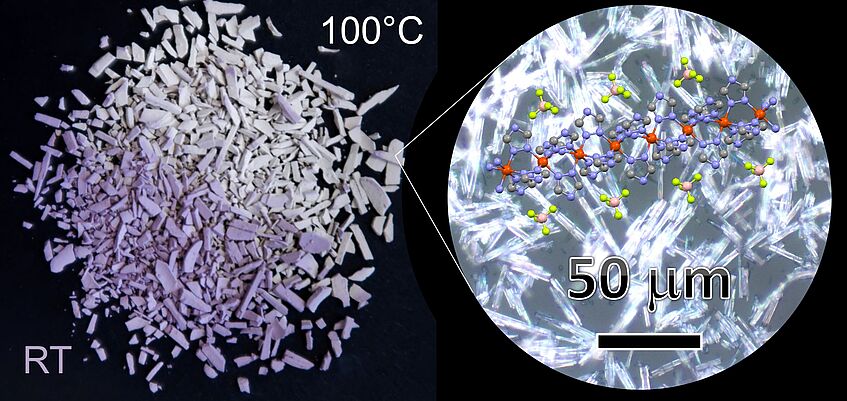Spin crossover of [Fe(Htrz)2(trz)](BF4) complex

© Shiraz Siddiqui, Oleg Domanov
Title of the project: Conductive Metal-Organic Frameworks (CMOF)
Name of the VDSP student: Shiraz Siddiqui
Project supervised by: Hidetsugu Shiozawa, Thomas Pichler
My name is Shiraz A. Siddiqui, resident of India. My research is presently supervised by Dr. Hidetsugu Shiozawa, funded by his FWF Project Elektrisch leitende metall-organische Geruste", and affiliated at the group electronic properties of material (epm) lead by Prof. Thomas Pichler at the Faculty of Physics, University of Vienna. The title of my PhD research is Low-dimensional properties of coordination polymers and related materials. My PhD project will be centered around the coordination polymers and metal-organic frameworks (MOFs) aiming at following objectives: 1. Synthesis of novel and quality MOFs and coordination polymers. 2. Study of their electronic, optical and magnetic properties by means of various experimental techniques. 3. Functionalisation of coordination polymers and MOFs using doping, electrochemical and spectroelectrochemical techniques. 4. Electronic applications of MOFs with focus on energy harvesting and storage.
We were successful in synthesizing quality single crystal in the micrometer range for the [Fe(Htrz)2(trz)](BF4) complex, where (Htrz)=1H-1,2,4-triazole. This complex exhibits a spin transition accompanied by thermal hysteresis i.e. change in color from purple at RT to white at 373 K as shown in figure. Spin crossover or spin transition is a phenomenon wherein a molecular complex changes its form from a low-spin (LS) state to a high-spin (HS) state under the influence of external factors such as temperature, pressure or external stimuli. A systematic series of synthesis in water has been carried out in order to realise crystals of different dimensions and dependencies on the precursor concentration (C) and the temperature (T). Raman spectroscopy, Powder XRD structure determination, magnetization measurements, electrical transport measurements, optical absorption, electrochemistry and DFT calculations allowed us to elucidate a more comprehensive understanding of [Fe(Htrz)2(trz)](BF4) complex.
